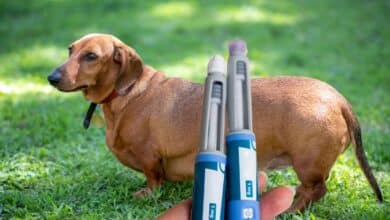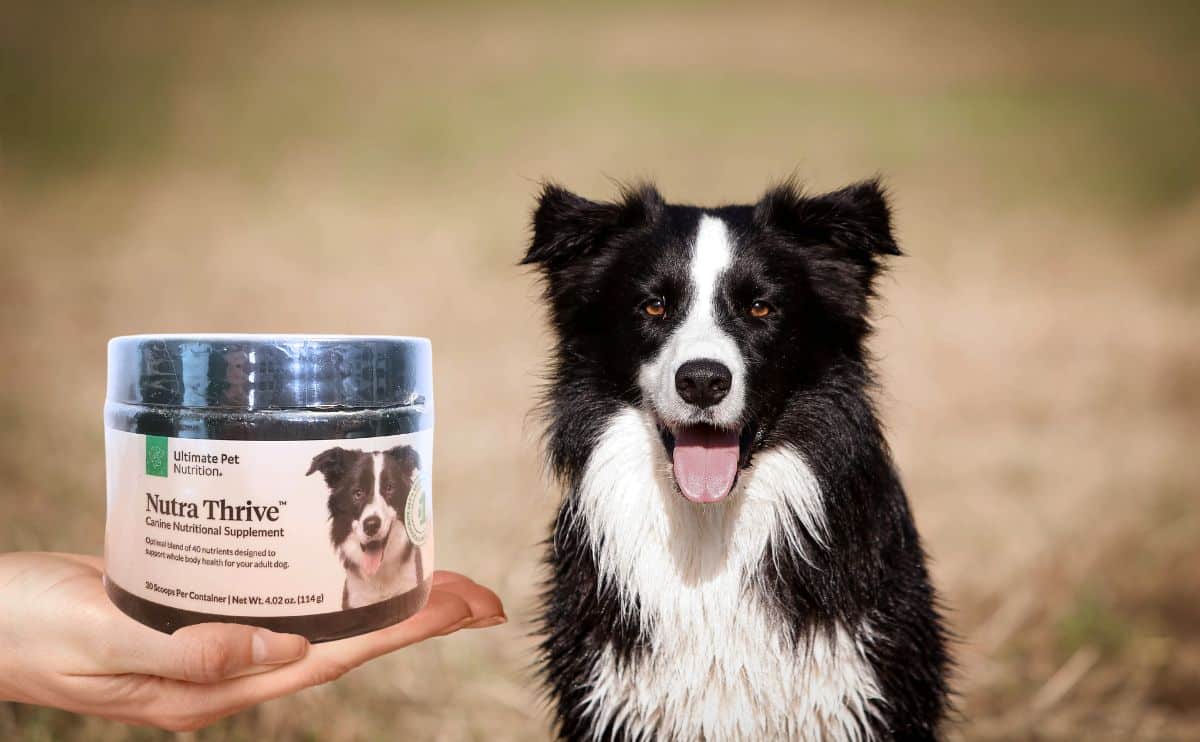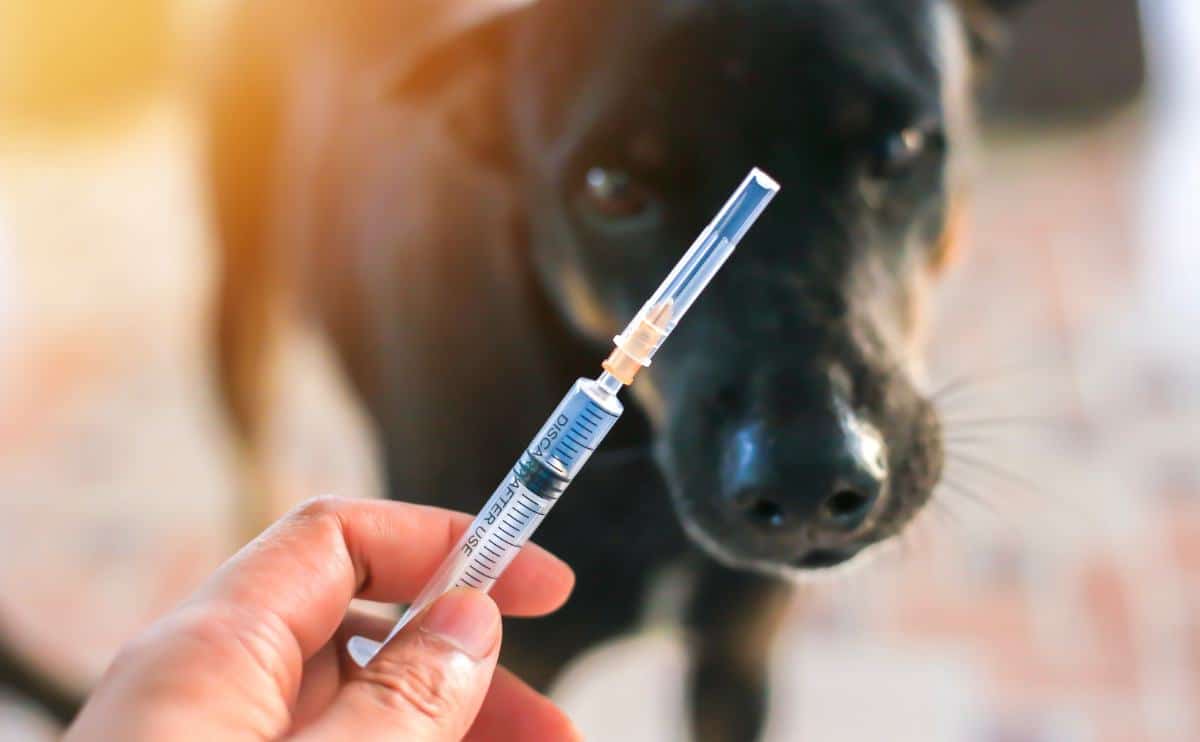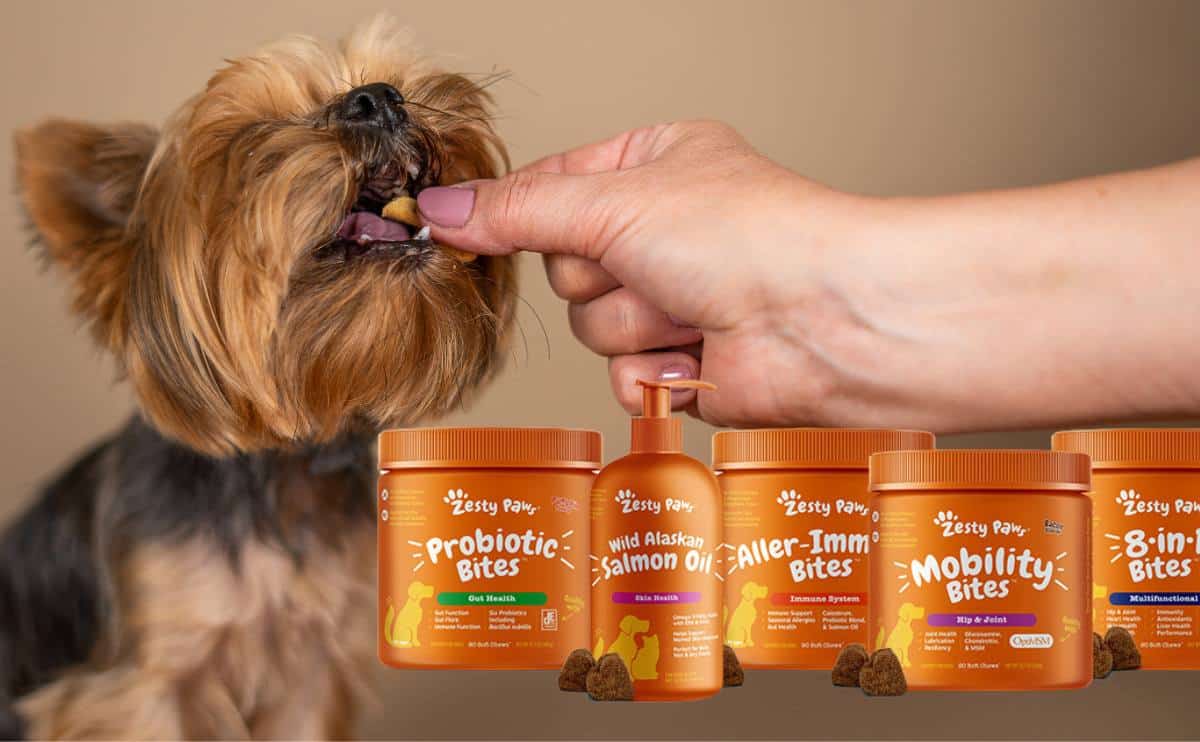Spoiler: The Canine Tooth Fairy Doesn’t Pay You—She Sends A Bill
When you purchase through links on our site, we may earn a commission. Here’s how it works.
Have you ever noticed your dog’s breath could rival a garbage dump? Neglecting their dental hygiene might be the culprit, and trust me, that stench isn’t just offensive—it could mean pricey vet bills are in your future.
Table of Contents
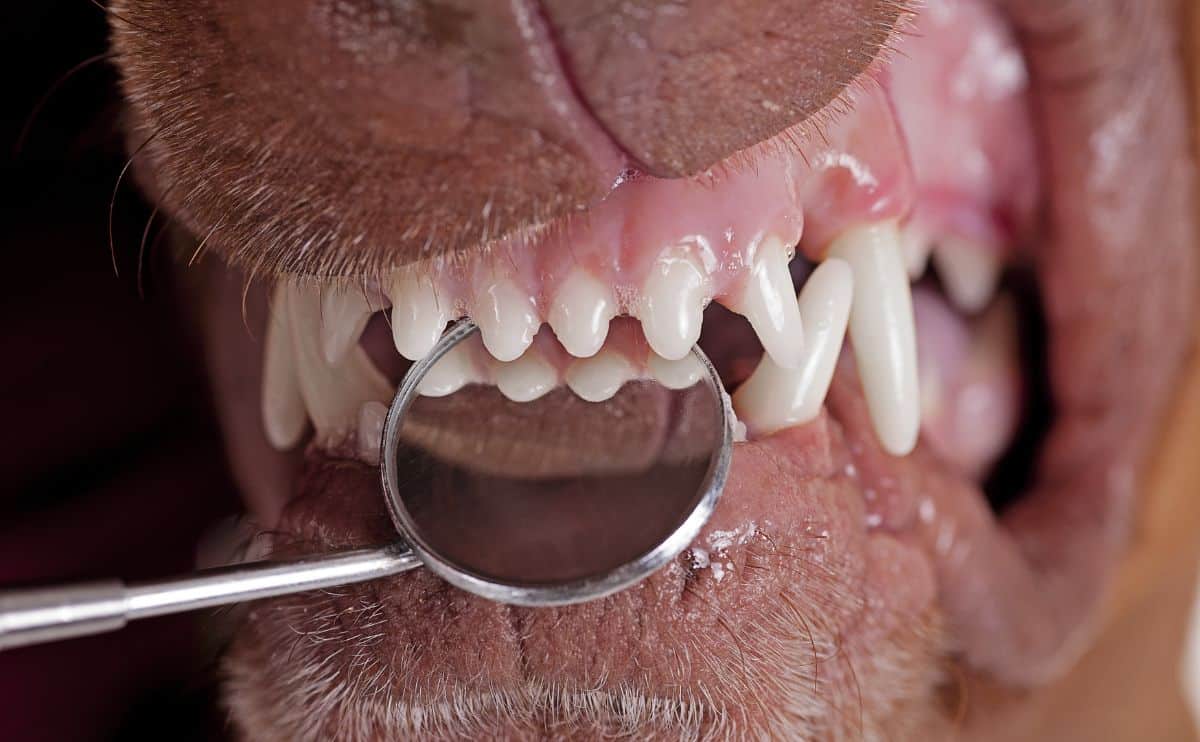
Let’s sink our teeth into what it takes to keep your dog’s smile healthy without draining your wallet.
Why Your Dog’s Dental Health Matters
Imagine going years without brushing your teeth. Gross, right? Dogs are no different.
According to VCA Animal Hospitals, over 80% of dogs over age three show signs of dental disease. Left untreated, it can lead to painful infections, tooth loss, and damage to vital organs like the heart and kidneys.
So, yeah—bad breath might be the least of your worries.
What Happens During A Professional Dog Dental Cleaning?
Dog dental cleanings are no joke. This isn’t your average tooth-brushing session. Here’s what typically goes down:
- Oral exam: Vets check for loose teeth, inflamed gums, or signs of decay.
- Dental X-rays: Revealing hidden issues under the gumline.
- Scaling and polishing: Scrapes away tartar and plaque buildup before polishing teeth to a shine.
- Anesthesia: Keeps your pup comfortable and still during the procedure.
How Much Does Dog Teeth Cleaning Cost?
Here’s a quick look at average prices for different types of cleanings:
| Service | Average Cost |
|---|---|
| Basic Cleaning | $300 – $700 |
| Cleaning + Extractions | $500 – $3,000+ |
| Dental Specialist Procedure (think doggy orthodontist) | $1,000 – $2,500+ |
This doesn’t include every little add-on (more on that below). The overall cost of cleaning a dog’s teeth can be steep, but it’s a worthy investment in your pup’s health.
How Often Should My Dog Get A Cleaning?
Most vets recommend professional canine dental cleaning once a year, but that can vary. Some small breeds or dogs prone to dental disease might need cleanings every 6 to 9 months. Your vet will guide you based on your dog’s age, breed, and mouth condition.
If your dog’s breath could melt steel, or you spot bleeding gums and yellow teeth, it’s probably time for a vet visit.
Is It Time For A Cleaning?
Here’s a quick checklist to help you know if your dog might be due for a professional cleaning:
- Bad breath that makes you gag
- Yellow or brown tartar on teeth
- Red or swollen gums
- Dog pawing at its mouth or chewing oddly
- Visible tooth damage or loss
If you said yes to two or more, it’s probably time to call your vet.
Are There Additional Costs?
Oh yes. Welcome to the “surprise charges” section of your vet visit:
- Blood work: $75–$200
- Anesthesia: $100–$400
- X-rays: $150–$250
- Pain meds & antibiotics: $50–$100
- Follow-up visits: $50–$100 each
Expect that bill to climb if your pup needs extractions due to gum disease, infection, or tooth fractures. Every mouth is different, and until vets get a good look under those furry lips, it’s hard to say what you’ll really need.
Real Talk: Our Experience With Vet Dog Dental Cleaning
When we rescued our Cavalier King Charles Spaniel, Lexie, her teeth were barely hanging in there. We tried anesthesia-free cleanings first—they’re cheaper and less invasive—but few clinics offer them, and they only work if your dog’s teeth are in good shape to begin with.
Lexie eventually needed full dental cleanings under anesthesia, including extractions. Beforehand, the vet did bloodwork to ensure she could safely go under. We shopped around for pricing (seriously—call multiple vets) and found a clinic a bit farther out that saved us hundreds.
They called mid-afternoon when she woke up and sent her home with pain meds (extra charge, of course), and she was groggy but smiling—well, as much as a dog can after losing a few teeth.
Our pet insurance covered the extractions but not the cleaning itself since it was considered preventative. Lesson learned: Always read the fine print.
– Sadie Cornelius, Cavalier King Charles Spaniel Pet Parent, Marketing & Creative Content For Canine Journal
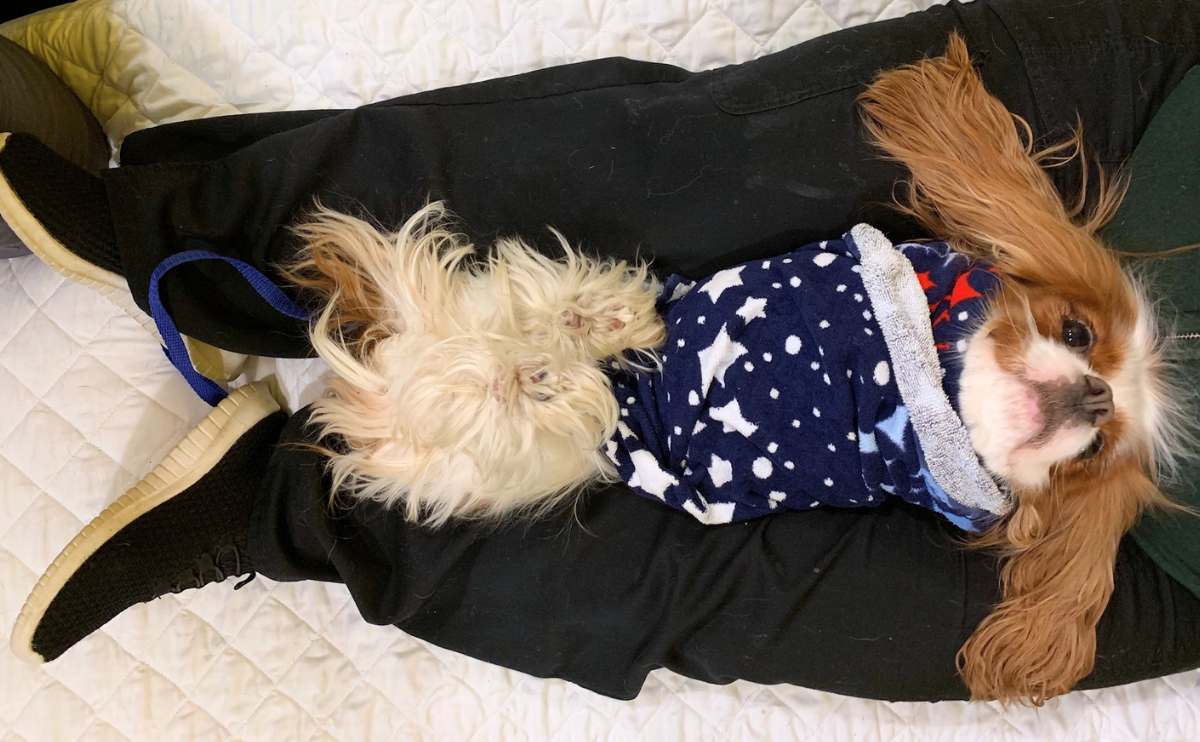
What About Tooth Extractions?
Even with great care, many dogs, especially seniors, will eventually need a tooth pulled.
Reasons include:
- Abscesses or infections
- Overcrowding
- Broken or cracked teeth
- Severe decay or gum disease
Extractions can cost anywhere from $500 to $2,500, depending on complexity. Vets may charge $15–$100 per tooth. Costs like X-rays, anesthesia, nerve blocks, and antibiotics can make your eyes water.
And if you’re facing a root canal? Sit down: they typically run $1,500–$3,000.
How Do I Clean My Dog’s Teeth At Home?
Not into remortgaging your house for doggy dental work? Fair. Here’s what you can do:
- Brush those chompers: Use dog-specific toothpaste and brush at least 2–3 times weekly (ideally daily).
- Try dental chews: Great for plaque control (and dog-approved).
- Use dental rinses or gels: Especially if your dog hates brushes.
- Explore smart solutions: Dental kits like BARK Bright Dental simplify the process for picky pups.
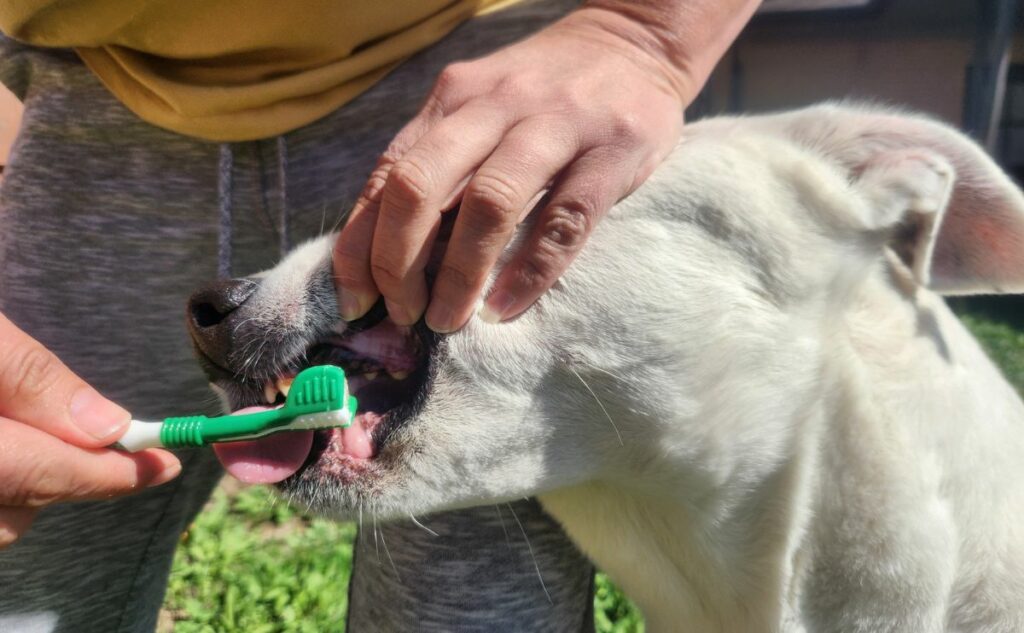
Our Experience With Dog Dental Cleaning At Home
I asked my vet which at-home dental solutions were the best. He broke it down simply:
- Brushing daily—especially with an enzymatic toothpaste. That was his number one recommendation. If you can only commit to one thing, make it this.
- If brushing isn’t realistic, chlorhexidine (either in rinse or dental wipe form) was the second-best option for controlling bacteria and plaque.
- Water additives and dental chews came in third—they’re helpful but more like support players than a complete defense.
I’ve been using this advice as our home routine. I found that brushing my dog’s teeth daily—plus using a water additive and dental chews—was the best option for me.
Alternatively, I chose the chlorhexidine route for my cats. They didn’t make brushing easy, and because cats tend to swallow treats whole, dental chews didn’t do much. It’s not perfect every day, but it’s helped reduce buildup and keeps vet bills from creeping up too fast.
– Tara Maurer, Dog Mom & Canine Journal Writer
Covering the Cost of a Lifetime of Dental Care
That $500 cleaning might feel steep now. But over a dog’s lifetime, dog teeth cleaning costs can easily add up to thousands.
Here are some tips to manage the long game:
- Pet insurance: Some plans cover extractions and emergencies.
- Wellness plans: These might cover routine cleanings and checkups.
- Preventive care: Less plaque = fewer problems & smaller bills.
Check out our updated comparison of the best pet insurance for dental coverage because nothing says “responsible pet parent” like not going broke over molars.
FAQ: Dog Dental Cleaning
More questions about dog dental cleaning? Here are some of our readers’ top concerns. Don’t see yours? Ask us in the comments!
How Do I Know If My Dog Needs A Dental Cleaning?
Watch for signs like bad breath, yellow teeth, red gums, or changes in eating habits. If in doubt, your vet can assess during an annual checkup.
Are Anesthesia-Free Cleanings Safe?
They can be for dogs with minimal plaque and healthy gums, but they don’t allow deep cleaning below the gumline. Always consult your vet before choosing this option.
Is Dog Dental Cleaning Essential?
Yes. Without it, dogs are prone to painful infections, tooth loss, and even organ damage from bacteria entering the bloodstream.
Does Pet Insurance Cover Dental Cleanings?
Most plans cover extractions or disease-related treatments, but not routine cleanings. Some wellness plans include preventive dental care.
Can I Use Dental Chews Instead Of Brushing?
Dental chews help, but nothing beats brushing. Think of chews as floss—they’re great support but not a complete replacement for brushing.
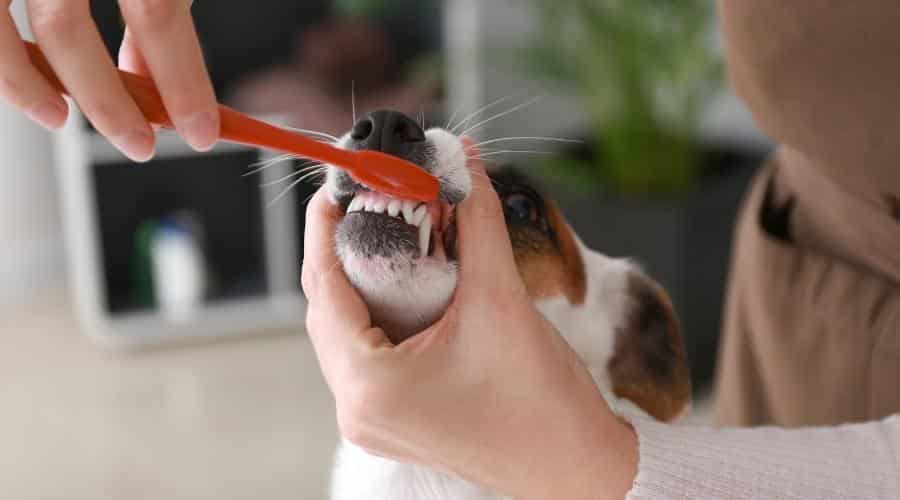
The Final Bite
Dog dental care is one of those things you can ignore—until you really, really regret it. Whether you’re looking to avoid foul breath or four-figure vet bills, a little effort now pays off later.
No one wants their pup to be the canine version of Austin Powers. So grab that toothbrush or one of these 10 toothbrush alternatives, and keep those fangs fresh.
Have a hilarious or horrifying dog breath story? Drop it in the comments—we won’t judge (probably).
